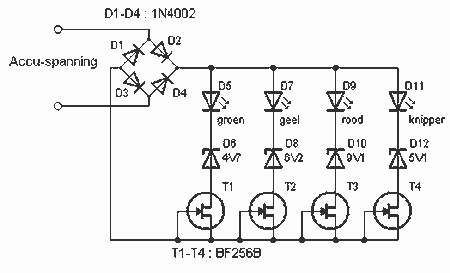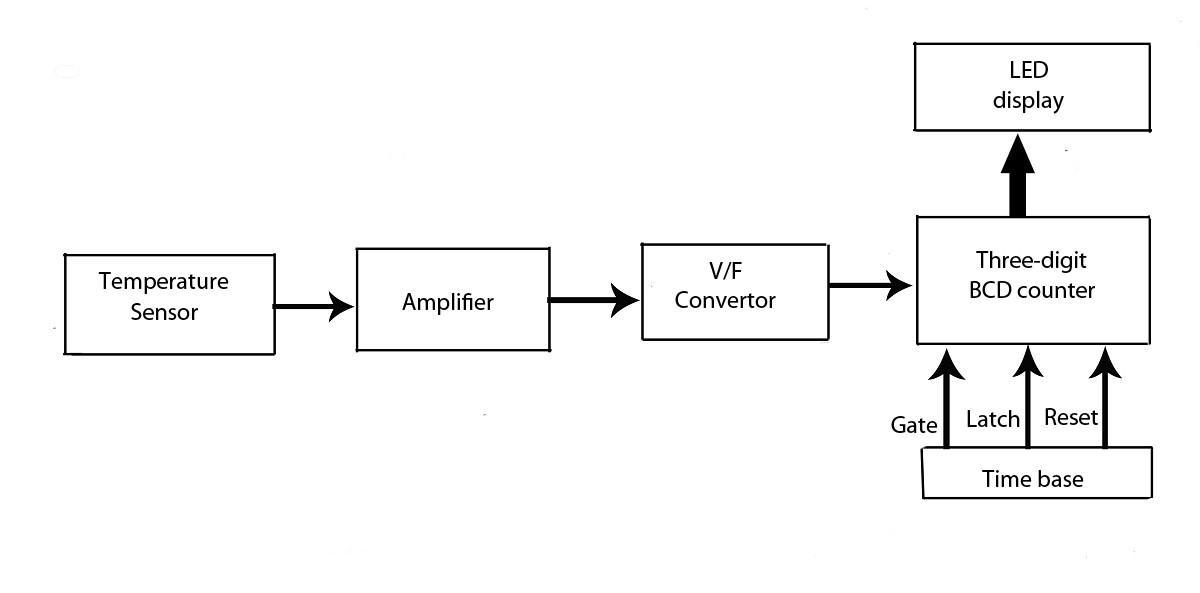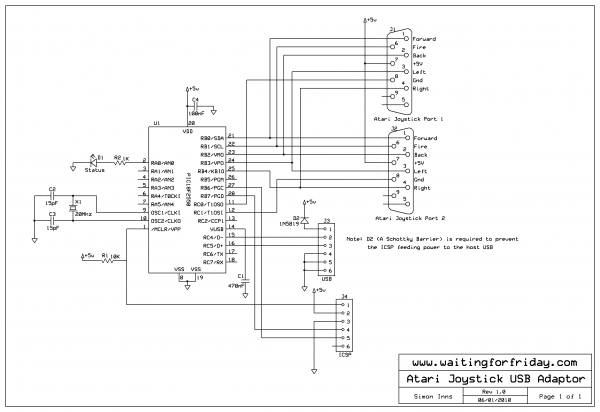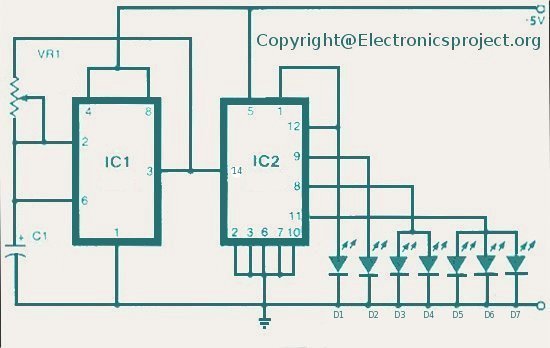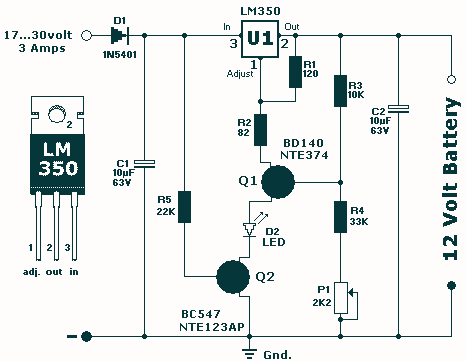
Battery-Charging Indicator For Mains Adaptor

While owning a modern NiCd battery charger is advantageous, there may still be instances where an incompatible battery is encountered, such as one with an unusual voltage requirement or a need for a higher charging current than what a standard charger can provide. In such situations, many individuals opt for an adjustable mains adaptor, typically rated at 500 mA, as a cost-effective means to deliver the necessary voltage for battery charging. Although this method is neither fast nor highly efficient, it is functional, albeit with certain limitations. It is essential to have a basic understanding of the required charging current. If an adjustable adaptor is utilized that is unregulated and has a low output current, the charging current can be adjusted by varying the output voltage. It is crucial to confirm that current is indeed flowing through the battery; thus, a current-detecting indicator is preferred over a voltage indicator. To ensure visibility of the charging status, the indicator should be positioned where it can be easily seen during regular movement. The circuit described activates an LED when the base-emitter voltage of the transistor exceeds approximately 0.2 V. With a resistor of 1 ohm, this occurs at a current of around 200 mA, or about 40 mA if the resistor is changed to 4.7 ohms. The voltage drop across this indicator will not exceed the base-emitter voltage (UBE) of the transistor, which is approximately 0.7 V. Even if the current through the resistor exceeds the level at which UBE equals 0.7 V, the transistor's base will accommodate the excess current. The recommended TO-220 style BU406 transistor can handle base currents up to 4 A. This charging indicator effectively addresses the aforementioned limitations.
The described circuit utilizes a simple LED indicator to provide visual feedback on the charging status of a NiCd battery. The LED is connected in such a way that it lights up when the base-emitter voltage of the transistor reaches a threshold, indicating that current is flowing to the battery. A resistor is used to set the sensitivity of the circuit, allowing for adjustments based on the specific charging requirements. The choice of the BU406 transistor is significant due to its ability to handle high base currents, ensuring that the circuit remains operational even under higher charging conditions.
The circuit design should be implemented with careful attention to the power ratings of the components used, particularly the resistor and the transistor. The resistor value can be adjusted to tailor the current detection level, allowing for flexibility depending on the battery being charged. For practical applications, the LED should be mounted in a visible location, and the circuit should be housed in a protective enclosure to prevent accidental short circuits or damage.
This setup provides a straightforward solution for charging incompatible batteries while ensuring that the user is aware of the charging status through the LED indicator. It balances simplicity and effectiveness, making it a viable option for those who require a custom charging solution.Although you may well be the proud owner of the very latest NiCd battery charger, you may still come across the odd `incompatible` battery, for example, one having a rare voltage or requiring a much higher charging current than can be supplied by your off-the-shelf charger. In these cases, many of you will resort to an adjustable mains adaptor (sa y, a 500-mA type) because that is probably the cheapest way of providing the direct voltage required to charge the battery. Not fast and not very efficient, this `rustic` charging system works, although subject to the following restrictions: You should have some idea of the charging current.
In case you use an adaptor which is adjustable but of the unregulated, low output current type, you can adjust the current by adjusting the output voltage. You have to know if the current actually flows through the battery. A current-detecting indicator is therefore much to be preferred over a voltage indicator. To prevent you from forgetting all about the charging cycle, the indicator should be visible from wherever you pass by frequently.
Using the circuit shown here, the LED lights when the baseemitter potential of the transistor exceeds about 0. 2 V. Using a resistor of 1 as suggested this happens at a current of about 200 mA, or about 40 mA if R1 is changed to 4.
7. The voltage drop caused by this indicator can never exceed the base-emitter voltage (UBE) of the transistor, or about 0. 7V. Even if the current through R1 continues to increase beyond the level at which UBE = 0. 7 V, the base of the transistor will `absorb` the excess current. The TO-220 style BU406 transistor suggested here is capable of accepting base currents up to 4A. Using this charging indicator you have overcome the restrictions 2 and 3 mentioned above. 🔗 External reference
The described circuit utilizes a simple LED indicator to provide visual feedback on the charging status of a NiCd battery. The LED is connected in such a way that it lights up when the base-emitter voltage of the transistor reaches a threshold, indicating that current is flowing to the battery. A resistor is used to set the sensitivity of the circuit, allowing for adjustments based on the specific charging requirements. The choice of the BU406 transistor is significant due to its ability to handle high base currents, ensuring that the circuit remains operational even under higher charging conditions.
The circuit design should be implemented with careful attention to the power ratings of the components used, particularly the resistor and the transistor. The resistor value can be adjusted to tailor the current detection level, allowing for flexibility depending on the battery being charged. For practical applications, the LED should be mounted in a visible location, and the circuit should be housed in a protective enclosure to prevent accidental short circuits or damage.
This setup provides a straightforward solution for charging incompatible batteries while ensuring that the user is aware of the charging status through the LED indicator. It balances simplicity and effectiveness, making it a viable option for those who require a custom charging solution.Although you may well be the proud owner of the very latest NiCd battery charger, you may still come across the odd `incompatible` battery, for example, one having a rare voltage or requiring a much higher charging current than can be supplied by your off-the-shelf charger. In these cases, many of you will resort to an adjustable mains adaptor (sa y, a 500-mA type) because that is probably the cheapest way of providing the direct voltage required to charge the battery. Not fast and not very efficient, this `rustic` charging system works, although subject to the following restrictions: You should have some idea of the charging current.
In case you use an adaptor which is adjustable but of the unregulated, low output current type, you can adjust the current by adjusting the output voltage. You have to know if the current actually flows through the battery. A current-detecting indicator is therefore much to be preferred over a voltage indicator. To prevent you from forgetting all about the charging cycle, the indicator should be visible from wherever you pass by frequently.
Using the circuit shown here, the LED lights when the baseemitter potential of the transistor exceeds about 0. 2 V. Using a resistor of 1 as suggested this happens at a current of about 200 mA, or about 40 mA if R1 is changed to 4.
7. The voltage drop caused by this indicator can never exceed the base-emitter voltage (UBE) of the transistor, or about 0. 7V. Even if the current through R1 continues to increase beyond the level at which UBE = 0. 7 V, the base of the transistor will `absorb` the excess current. The TO-220 style BU406 transistor suggested here is capable of accepting base currents up to 4A. Using this charging indicator you have overcome the restrictions 2 and 3 mentioned above. 🔗 External reference
